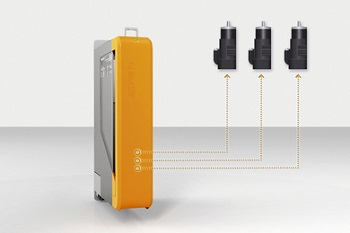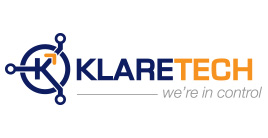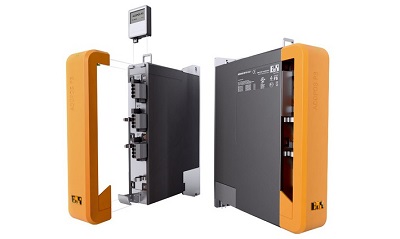Faster, Smaller, ACOPOS
More than ever before, machine and system manufacturers are being bombarded with demands for increased productivity and availability. At the same time, pressure is constantly building to reduce the manufacturing costs for production machines. The new servo drive generation from B&R was designed to meet these challenges. Offering a high degree of integration and an extremely fast sampling time of 50 µs, the ACOPOS P3 is opening up entirely new opportunities for virtual sensors. Complex production processes require complex machines – and therefore sophisticated hardware and software. The control cabinets for advanced machines and systems take up additional space in production halls, while their procurement, cabling and cooling can quickly drive up costs. Machine and system manufacturers therefore do all they can to reduce control cabinet space to a minimum. Reducing the space that hardware takes up in the control cabinet, the footprint of the devices located there, is crucial.
Faster: 50 µs sampling time
For highly dynamic and precise processes like those in the printing and packaging industry, high-speed precision control of movements is a must. One of the factors that limits speed is the sampling time of the servo drive. The cycle time for current, speed and position control on the ACOPOS P3 is 50 µs. "This sampling time allows us to implement new closed-loop control processes that can be summed up under the term 'virtual sensor technology'," explains Holzleitner. The necessary bandwidth and precision on the network is provided by POWERLINK.
The trend in machine manufacturing is towards saving energy, which puts a premium on lightweight construction. Engineers attempt to reduce masses that require moving to a minimum in order to keep the amount of energy required as low as possible. This results in reduced rigidity and increased elasticity, however. Virtual sensors make it possible to control these elastic systems without having to use additional position measurement systems at the process intervention point. The use of virtual position encoders in the motor is becoming more common, eliminating the need for a motor position encoder, cable and evaluation unit in the servo drive while increasing availability. "There are also further additions to the standard controller cascade for ACOPOS P3 servo drives," explains Holzleitner. This includes repetitive control, for example, which makes it possible to predict and compensate for lag errors. The result? More precise control, improved performance and increased product quality.
 | B&R will be presenting the ACOPOS P3 at the SPS/IPC/Drives trade fair in Nuremberg in November 2014. Versions with 1, 2 and 3 axes will be available, covering a power spectrum ranging from 0.5 to 24 kW. Over 1,000 ACOPOS P3 drives can be controlled in a single system. The ACOPOS P3 is compatible with all previous servo drives from B&R and can be connected together with them in a network. |
Smaller: 69% space saving
"Compact products represent the future of automation," explains Alois Holzleitner, technical manager of motion systems at B&R. It is therefore important to reduce the number of automation components needed, the amount of space they require and their overall complexity. "This was what we had in mind when developing the ACOPOS P3," he continues. The ACOPOS P3 can control up to three axes per device, even though the housing is no larger than its single-axis predecessor. This frees up to 69% more space in the control cabinet. And when it comes to making the best possible use of this saved space, the P3 is the front-runner for servo drives with integrated safety functions: The power density of the 3-axis drive is over 4 amps per liter.
Safer: 14 safety functions
Thanks to machinery directives in the EU and similar legal regulations in other parts of the world, the safety functions in automation components are becoming increasingly important. The ACOPOS P3 provides many safety functions that satisfy SIL 3 / PL e, Category 4 requirements. A completely new function, Safely Limited Torque (SLT), checks whether the maximum permitted torque has been exceeded. "The combination of SLS and SLT, together with ultrafast response times, provides highly effective protection against injury," explains Holzleitner. The Remanent Safe Position (RSP) safety function is also new. This safe position data allows the safe monitoring of all serial kinematic chains for robots with regard to velocity, orientation and workspace. All 14 safety functions are completely network-based and can be used dynamically in the system thanks to openSAFETY.
Integrated safety functions:
STO, SS1, SS2, SLS, SMS, SBC, SDI, SLI, SLP, SMP, SLA, RSP, SBT and SLT
Less: 1 cable
A motor traditionally requires two cables – the motor cable and the encoder cable. Eliminating one of these cables not only results in reduced cable costs, but also less time and effort when it comes to commissioning and maintenance. As the name suggests, a one-cable solution allows motor power, encoder data and digital safety information to be transferred between the ACOPOS P3 and motor using just a single cable, reducing both component and commissioning costs. A conventional connection using motor and encoder cables is still possible without any problems.
Safeguarding engineering expertise
"Many companies face a dilemma when only one or two developers have most of the engineering expertise between them," says Trappl. If one or even both leave the company, not only do newer developments suffer, but it also becomes impossible to maintain and further develop the applications already in action. "This can't happen with mapp," assures Trappl. "The functions themselves are very transparent and extensively documented."
International: 4 power mains forms
It's not just differences in voltage levels that make it more difficult to design machines for use in different countries on different continents, entirely different power mains systems can also present a problem. "Machine and system manufacturers are often forced to use isolating transformers in order to adapt to the situation in other countries," says Holzleitner. The flexibility of the ACOPOS P3 shines in this regard since it supports the world's most common power mains configurations, such as TN, TT, IT and corner grounded TN-S systems. In some circumstances, only an additional line filter is needed to meet the necessary regulations. In addition, the ACOPOS P3 satisfies the machine manufacturing requirements set forth in EN 61000-6-4 (generic standards for industrial emissions) and EN 61800-3 (first environment, category C2).



